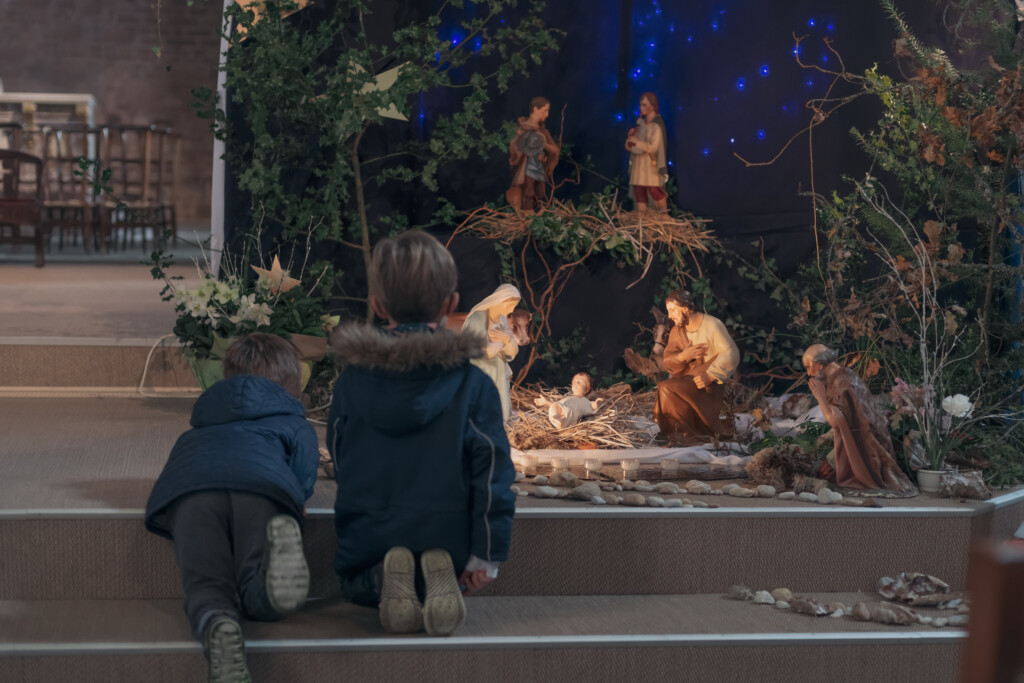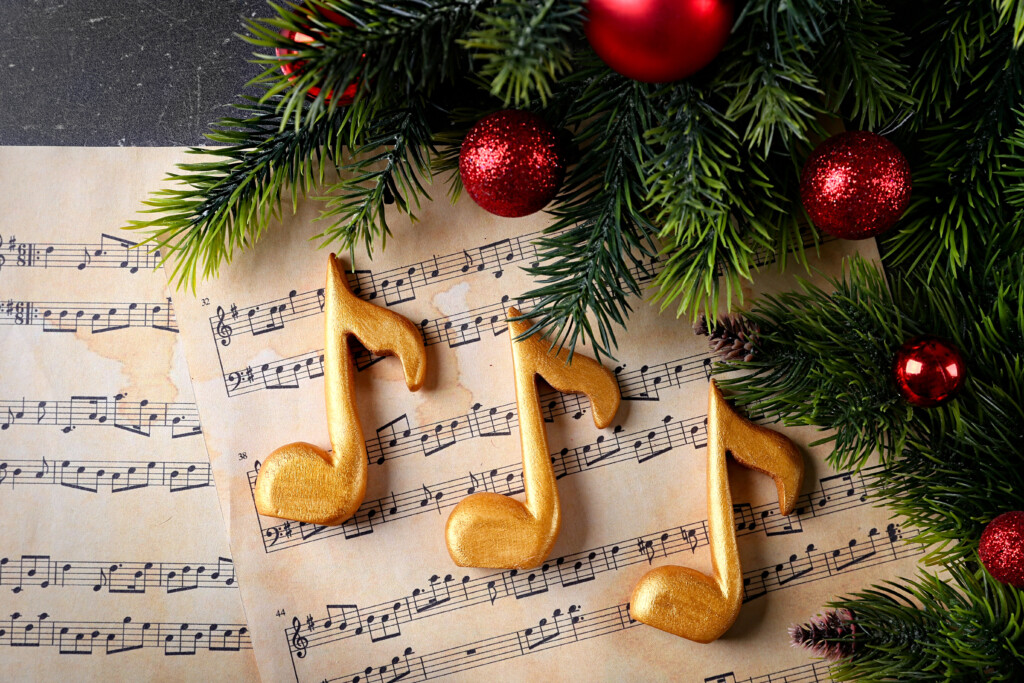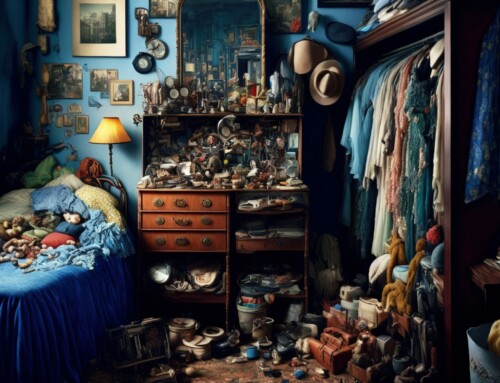Christmas traditions are kept by every country in the world. In some places these practices are different, in others they are similar with the countries around us. What Christmas traditions are remembered in EU countries?
Christmas traditions in Germany
Christmas trees are very important here. If there are small children in the house, the tree is usually decorated secretly by the mother. It is traditionally brought into the house only on Christmas Eve. Emphasis is placed on the overall decoration. Wooden frames covered with coloured plastic sheeting are put in the windows, with electric candles inside to make the house look nice from the outside. There is also a tradition where Christmas shapes such as bells and Bethlehem are cut out of paper and then different coloured transparent paper is put behind the holes to make them look like stained glass windows. Traditional ornaments used to decorate the tree are ornaments made of blown glass or wooden pods.
Christmas in Austria
Austria has many Christmas traditions in common with neighbouring Germany, but also many customs of its own. Every major city has a large Christmas tree in the town square. At home, they decorate it with gold and silver ornaments and stars made of straw. Christmas begins to be celebrated around 4pm on Christmas Eve, when the tree is lit for the first time and people sing carols around it. Among the decorations we find candles and sparklers. For children, the most important element of the decoration are sweets, chocolate of various kinds and jelly rings. The children believe that Christkind decorates the tree and also leaves them presents under the tree. They imagine him as a golden-haired child with wings, symbolizing the newborn Christ.

Christmas traditions in the Netherlands
Christmas Eve itself is a much quieter day in the Netherlands than St. Nicholas Day. It is celebrated by attending church and sharing a family meal together as elsewhere. In the afternoon, a special Christmas event is held in the church where the Christmas story and other stories are told. These are often the only presents that children receive on Christmas Eve, as they have already received most of their presents on St. Nicholas Day. If Dutch children do receive any trifles, they believe that Santa Claus (also called the Christmas man) comes from Lapland in Finland to bring those to them. Christmas Eve is known as the first day of Christmas, and the day after Christmas is known as the second day of Christmas. On the second day, people tend to visit families, but also large shopping malls.
Christmas in Belgium
The Belgians have another symbol of Christmas – Bethlehem – placed next to the traditional tree. Some even have it life-size in their gardens. In most villages, live Bethlehem with real animals (donkey, sheep, ox) are held near the church. The atmosphere is completed by choral music. Local people also like to decorate the outside of the house with lights, reindeer or St. Nicholas climbing on the roof. Smaller gifts are put under the tree and unwrapped on Christmas Eve. People celebrate with family and visit friends or distant relatives as they do in most other countries.

Traditions in UK
Christmas is the biggest party season in UK There is still the typical sending of Christmas cards. This tradition dates back to the beginning of the 19. century and developed with the development of the postal service. Many people send and receive fifty or even a hundred cards every Christmas and then they are used as part of the Christmas decorations. Singers singing carols on the streets because the British people love to sing and singing is part of their lives, whether at school, with friends or in church. In the days leading up to Christmas, we see carolers on many main streets and in shopping malls. According to tradition, Christmas is a family event here. It is believed that Father Christmas comes into the house through the chimney and leaves presents in large Christmas stockings, which the children hang next to the fireplace, at the end of the bed or around the tree on Christmas Eve.
Christmas traditions in Romania
Romanian Christmas celebrations begin on Christmas Eve, when people decorate the Christmas tree with candy, handmade ornaments and coloured lights while singing carols. Houses are decorated with mistletoe symbolising good luck and wealth. On Christmas Eve, groups of excited children and young people go to the streets to sing carols and tell the story of the birth of Jesus. During this they wish health, happiness and love. Especially in the villages, they go from house to house and each family rewards them with homemade cakes, fruit and sometimes even money. Young people put on a theatrical performance during which they dress up as goats or bears and sing and dance in the streets. The performers may be accompanied by a group of dubashas – free drummers.
Christmas in Bulgaria
Christmas is celebrated in Bulgaria on 25th December, despite the fact that they profess the Eastern Orthodox religion here. They follow the Gregorian calendar. Carolers go from house to house in the villages at Christmas, starting at midnight on Christmas Eve. These groups are usually made up of young men dressed in traditional costumes, which vary from region to region. Carolers make special preparations for these festive performances. They often sing all night. When they come to a house, they sing a song about it, praising it and wishing it well. Like every tradition, this one has its own meaning. This custom is said to protect against evil spirits. The songs consist of two parts, with half of the singers singing the song and the other half repeating it. The carol singers are rewarded with food for their singing and chanting. Special dishes include round buns and cheese-filled pastries.

Customs in Hungary
People also spend Christmas Eve with family and decorate the Christmas tree. Sometimes only adults decorate it (without the presence of children), so for the kids, when they come and see it, it’s a big surprise. They are told that the tree was brought by angels. In Hungary, the tradition of Midnight Mass is very popular. Most people go to church after Christmas dinner. The children hope to find some presents under the Christmas tree when they get back home. They wait outside the room where the tree is set up, and when they hear the bells ringing, they can enter and a nice surprise awaits them underneath.
Christmas traditions in Croatia
Christmas trees are very popular and are usually decorated on Christmas Eve, but some people put them up and decorate them on St. Nicholas Day. In Croatia, they are traditionally decorated with fruit-shaped decorations. In the past, it used to be pieces of real fresh or dried fruit. In rural parts of the country, it is still customary to bring straw into the house on Christmas Eve as a symbol of a good harvest, as in the old days. On Christmas Eve, a log called badnjak (meaning Christmas Eve) was also traditionally brought into the house and lit. However, nowadays only few people have a fireplace. Gifts are usually exchanged on Christmas Eve. Many people here also like to go to midnight mass.
Traditions in Serbia
Serbia is distinguished by the fact that Christmas is not celebrated here 24. and 25 December as in other countries, but only 6. and 7 January. They follow not the Gregorian but the Julian calendar. Christmas tree decorating begins around 19. December, when the Serbs have St. Nicholas Day. January 6 is a fasting day. Once upon a time, on this day, the head of the whole family went into the forest in the morning to look for a tree (badnjak) – most often an oak tree, which was put to burn in the fireplace. At Christmas, the youngest member of the family (who also receives gifts – candy, clothes, money) goes to the other families to make the vines, because children and the young have the strongest health. Choosing the youngest caroller symbolizes that the visited families will have a successful next year, will be prosperous, nothing will go wrong or will damage their health. The caroller also brings a piece of badnjak, which he throws into the fireplace and wishes good luck and health.

Christmas in Lithuania
Just before Christmas, the whole house is cleaned, the bed linen is changed and everyone is washed and dressed in clean clothes to be ready for the festive meal. Because people believe that cleanliness helps protect them from evil and disease during the coming year. White paper straw ornaments are popular Christmas tree decorations in Lithuania. They are often in the shape of stars, snowflakes and other geometric shapes. The tradition is to spread straw on the table top and cover it with a clean, white tablecloth. The table is then decorated with candles and small branches from the fir tree. The straw reminds people of baby Jesus lying in the creche. Superstition says that if they pull a piece of straw out from under the tablecloth and it is long, they will live a long life. If it is short, they will have a short life as well; thick straw means a rich and happy life.
Customs in Slovakia
Slovak traditions include putting a carp scale under the tablecloth during a festive dinner to ensure prosperity in the form of money, or setting an extra plate to symbolize a place for deceased family members. One must not leave the table when dining, as it is said to bring bad luck. Another custom, especially in the past, was that the mother of the family would make a cross on the forehead with a clove of garlic, which she had previously dipped in honey, for both the children and her husband.
If you are interested in what is eaten in different countries for the holidays, check out this article about Christmas dinner. Want to know how companies are preparing for Christmas? You can read how we prepared in Atena.
Which traditions are among your favourites, without which you could not imagine celebrating Christmas?







